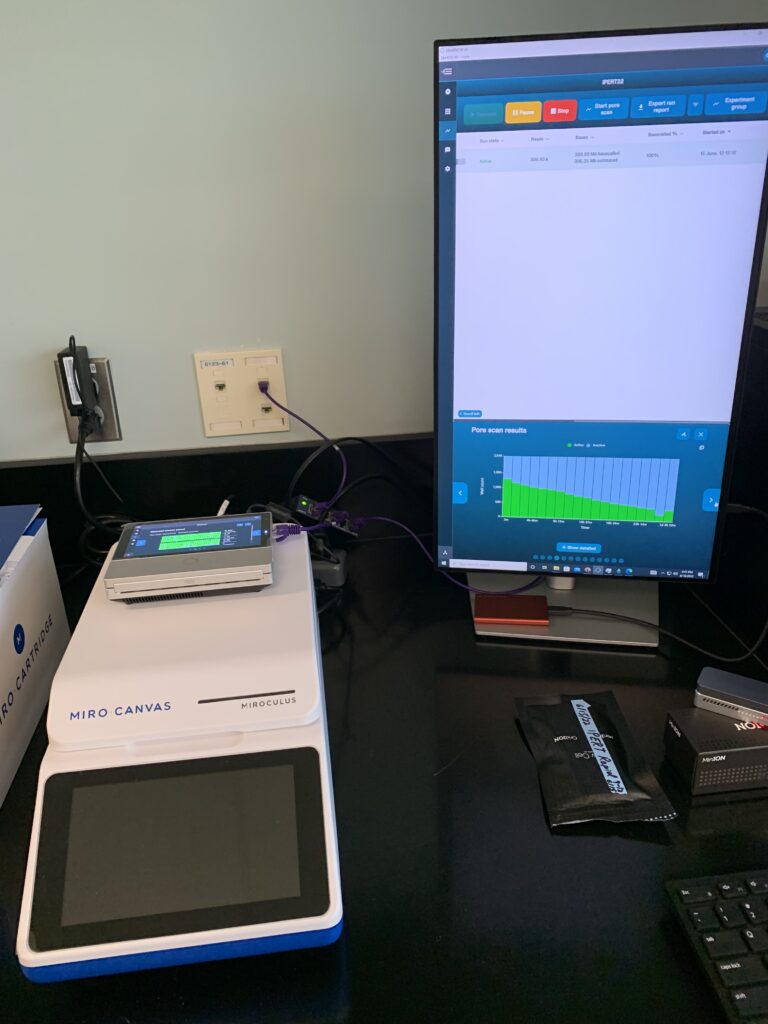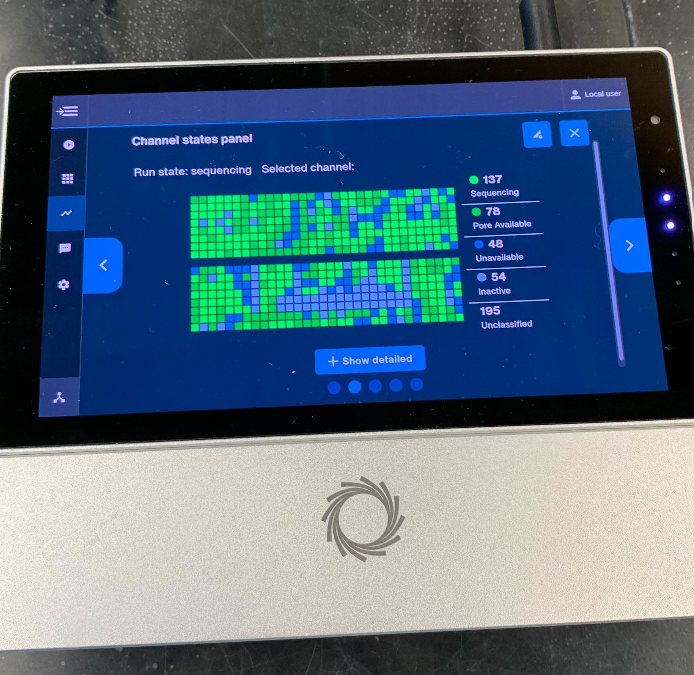BIT 495/595 Portable Genome Sequencing
Nature Methods named long-read sequencing “The Method of 2022” for its impact on countless projects and applications, including the Telomere-to-Telomere (T2T) human genomes and rapid diagnostics. We will create and share work on this webpage as part of the course.

Overview
- Evaluate sample preservation and nucleic acid extraction procedures for a given experiment.
- Analyze Nanopore sequence data to base call signals and filter reads.
- Compare sample and library preparation methods for a given sample and research question.
- Design an experiment to address a relevant biological question with Nanopore sequencing.
Topics
- Topic 1: Nanopore sequencing technology and applications.
- Topic 2: Sample storage and prep. DNA and RNA extraction options and quality control
- Topic 3: Library Prep for DNA and RNA
- Topic 4: Base-calling
- [Data analysis time]
- Topic 5: Workflows & analyses
- Topic 6: New Applications
Labs
- Lab 1: Sample prep and quality control
- Lab 2: Plasmid sequencing and confirmation
- Lab 3: Microbial genome sequencing and assembly
- Lab 4: Metagenome sequencing
- [Open lab time]
- Lab 5: RNA sequencing
- Lab 6: Large genome sequencing
Resources
